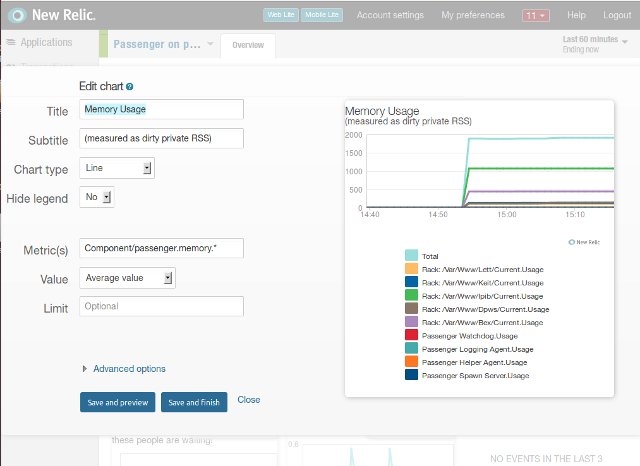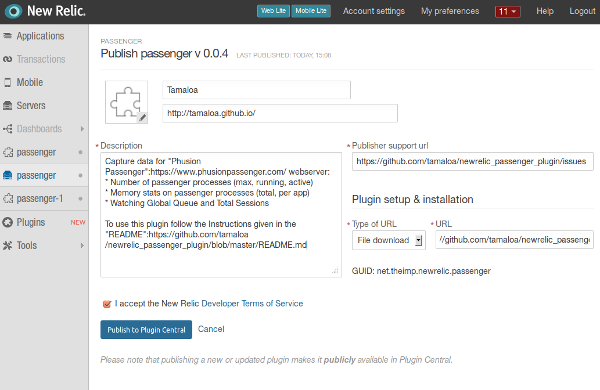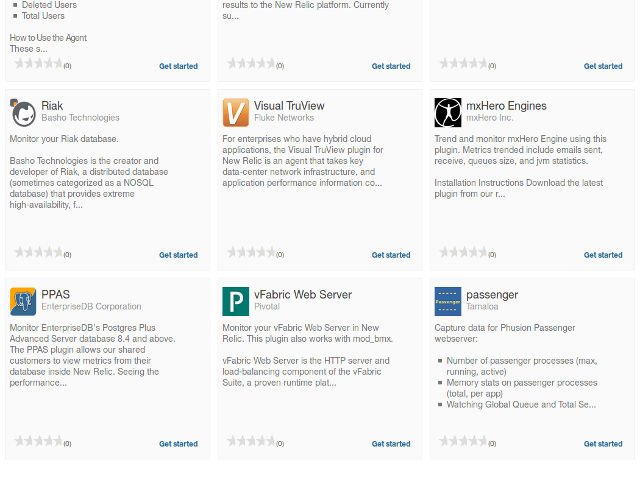Creating And Publishing A New Relic Passenger Plugin
New Relic Plattform now allows custom agents to report performance metrics. There exist several SDK to pick from as well as an web API.
We use Phusion Passenger web server to deploy our Rails apps. New Relic already helps a lot in fixing performance issues inside the apps. Since we started using the New Relic server monitoring agents our previous setup has become somewhat obsolete. Prior we were running munin to gather statistics on our servers and applications. We were using the default ubuntu 12.04 packages with a custom theme (the built in one is just terrible). To monitor our rails apps we used the munin-plugin-rails gem which gathers data on
- rails apps by parsing the log files
- passenger web server by using the provided command line utilities
Parsing rails logs does provide some basic information on the applications performance. But it makes changing the Rails log formant difficult (and Rails log format is NOT production ready) and of course New Relic is just so much nicer to look at :)\ The information gathered for passenger was still quite useful and not available in New Relic but munin is just really terrible if you actually want to do more than just have a quick look at the long term development (drilldown, setting timeperiods etc. is not possible). Also we wanted to know how much memory was used per Rails-App (we have a multiapp deploy per passenger webserver). So either we would have to add code to the munin plugins … or try out the (kinda) new New Relic plugin architecture.
And yes - it is suprisingly easy to write a custom New Relic agent.
- Download Ruby example agent
- add some code to gather data (here easy: copy from munin gem)\
passenger_status_output =~ /count\s+=\s+(\d+)/ - send data to New Relic\
report_metric "passenger.processes.running", "Processes", $1 - start agent on your server (add your license key first)
- Metrics start to show up in New Relic UI
- Adjust UI (click, drag, drop, finished)

Later you can publish the Agent … I have the feeling New Relic makes this harder than it should be. Most likely because there is no QA for the plugins listed in their plugins directory. I feel it would be easier if the UI configuration could be stored as a config file and versioned alongside the agent code. This would allow useful sharing of agents without the need of publishing them (i.e. if they really are just a hack - as this one :).
Anyway, reading the publishing documentation makes you think it is real hard to publish a plugin. You need a company site, contact and support information and a whole load of requirements.
But actually you need no more than to host your plugin on github (or similar). This provides you with a webpage (github readme) a contact and support possibility (github issue page) and download link (github repository as zip link). Also the actual publishing process is a simple one page form …

And after accepting the terms of service stuff (#TODO: Read them) the plugin appears at the bottom of the plugins directory
